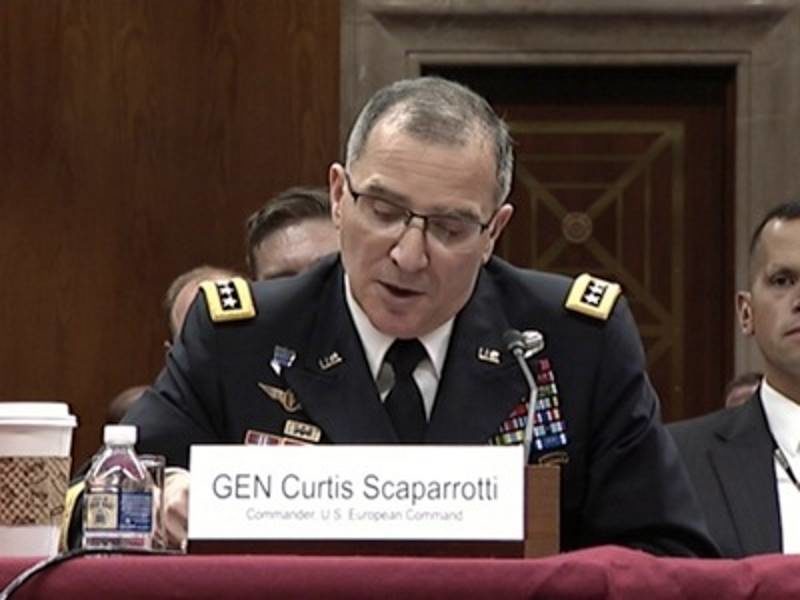
General Curtis Scaparrotti head of the US’s European Command
In preparation for President Trump's visit to Europe (24 May: Rome; 25 May: the Nato Summit, Brussels; 26- 27 May: the G7 Summit at Taormina), the Pentagon presented its strategic plan for the "European theatre". Its spokesperson? General Curtis Scaparrotti who, as the head of the US's European Command, automatically becomes the head of NATO, holding the office of Supreme Allied Commander for Europe. On 2 May, in the US Senate, the General recalls that "the European theatre remains critical to our national interests" and that "the Nato Alliance gives us a unique advantage over our adversaries". Yet such an advantage has now been placed in danger by a "resurgent Russia [that] seeks to undermine the Western-led international order and reassert itself as a global power".
The Supreme Commander calls on its European allies to close in ranks around the United States to defend by every possible means, the "international order" - the one that is founded on the economic, political and military supremacy of the West - endangered by the emergence of new states and social subjects.
Its focus is transfixed on Russia, accusing it of "malign activities and military actions against Ukraine" (precisely at the time of the third anniversary of the massacre of dozens of Russians, that took place at Odessa on 2 May 2014, at the hands of Neo Nazi Ukrainians under USA/Nato command. However, the "threat" is not coming from Russia alone: the United States - declared Admiral Harris, Head of the Pacific Command - is challenged in that region at the same time by "an aggressive China and a revanchist Russia".
In response to these challenges, announces Scaparrotti, the US European Command, "we are returning to our historic role as a war-fighting command, adjusting our plans to the threats that we have in front of us". This is why he is imploring Congress to increase the funds for the "European Reassurance Initiative", an operation launched by the USA officially to "reassure" its Nato allies and European partners and for which 3.4 billion dollars has been earmarked in 2017. "These are necessary, significant investments - emphasizes the General - to increase throughout Europe our advanced presence, the pre-positioning of military materials, the drills in preparation for conflicts".
The plan is clear and is already underway: to transform Europe into the firing line for yet another confrontation with Russia. The announcement made on 4 May, confirms this: that the US Army in Europe had built a new headquarters at Poznan, Poland, to command more than 6,000 US soldiers that have been lined up in Poland, Estonia, Lithuania, Germany, Slovakia, Hungary, Romania and Bulgaria in order to "strengthen Nato's Eastern flank, serving as a deterrence to Russia".
In this lining up on the Eastern flank, which includes armoured forces, fighter bombers, war ships and missile units (including nuclear ones) - are participating Nato European powers. This is demonstrated by France sending her troops and Britain her tanks, to Estonia.
And what about the European army? At the meeting of the EU Defense Ministers, on 27 April at Malta, the Nato Secretary General, Stoltenberg left no room for doubt: "it was clearly agreed by the European Union that its objective is not to build a new European army or structures of command in competition with Nato's, but something that may complement what Nato is doing".
The sceptre of command thus remains squarely in the hands of the Supreme Allied Commander in Europe, a US general appointed by the US President.Via Il Manifesto (Italy)
????
Another mad dog arises out the swamp, his mind swirling with hubris, caught up in fantasy dreams of the old cold war days; a real modern day Don Quixote out to save the Western coalition from an imaginary enemy and maintain the Western style of “international order,” that same kind of freedom, democracy and “order” that we brought to Iraq, Libya, Syria and 30 or so other countries around the world. Surely some in Europe can see through this hypocritical and retarded sloth.